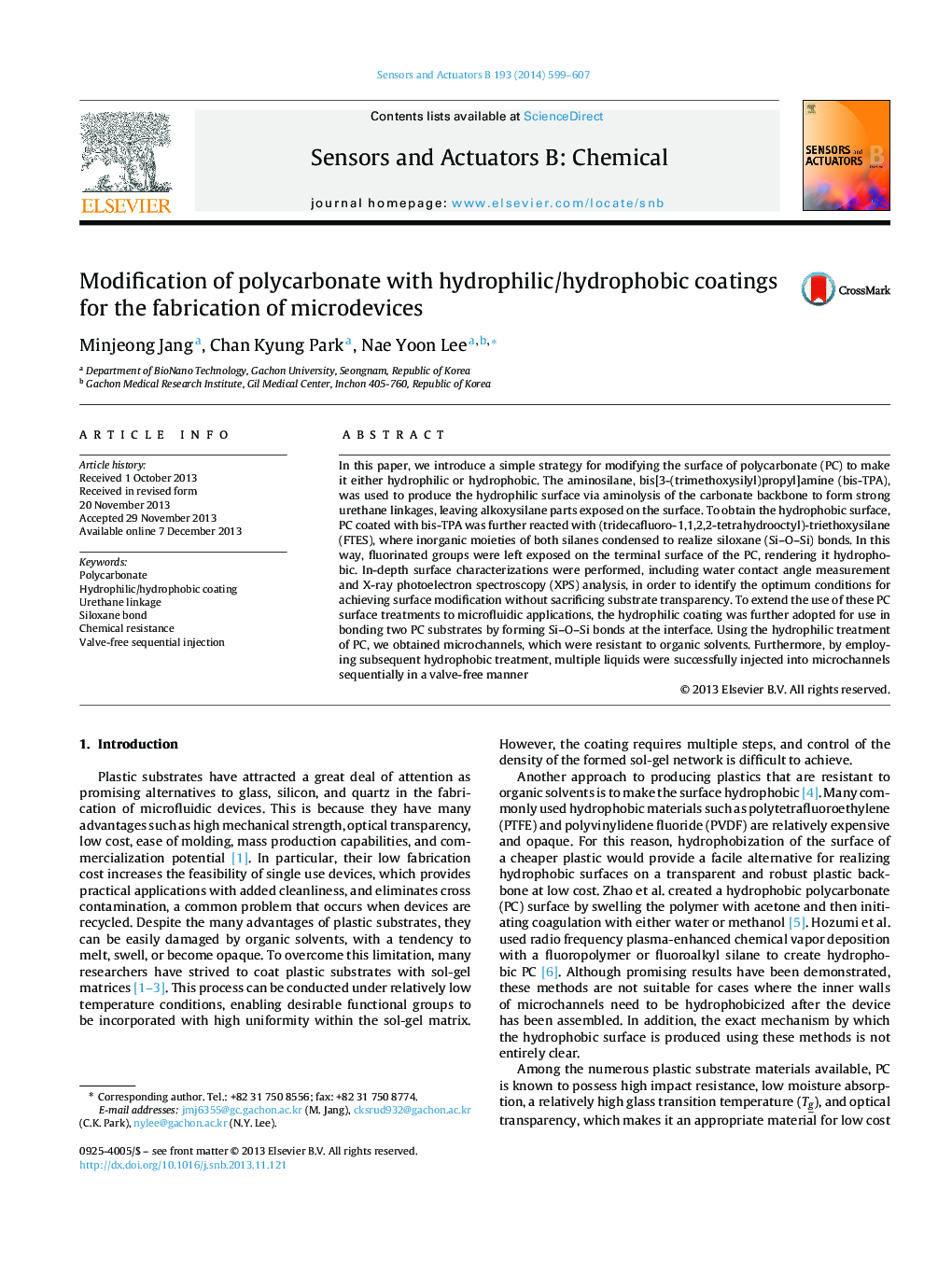| کد مقاله | کد نشریه | سال انتشار | مقاله انگلیسی | نسخه تمام متن |
|---|---|---|---|---|
| 740115 | 1462097 | 2014 | 9 صفحه PDF | دانلود رایگان |
• Polycarbonate surface was tuned into hydrophilic/hydrophobic via chemical coating.
• Hydrophilic PC was obtained by coating aminosilane, mediated by urethane linkage.
• Hydrophobic PC was obtained by further reaction with fluorosilane on hydrophilic PC.
• Hydrophilic coating of PC ensured chemical resistance to organic solvent.
• Hydrophobic coating enabled valveless stepwise injection of liquids into PC channel.
In this paper, we introduce a simple strategy for modifying the surface of polycarbonate (PC) to make it either hydrophilic or hydrophobic. The aminosilane, bis[3-(trimethoxysilyl)propyl]amine (bis-TPA), was used to produce the hydrophilic surface via aminolysis of the carbonate backbone to form strong urethane linkages, leaving alkoxysilane parts exposed on the surface. To obtain the hydrophobic surface, PC coated with bis-TPA was further reacted with (tridecafluoro-1,1,2,2-tetrahydrooctyl)-triethoxysilane (FTES), where inorganic moieties of both silanes condensed to realize siloxane (Si–O–Si) bonds. In this way, fluorinated groups were left exposed on the terminal surface of the PC, rendering it hydrophobic. In-depth surface characterizations were performed, including water contact angle measurement and X-ray photoelectron spectroscopy (XPS) analysis, in order to identify the optimum conditions for achieving surface modification without sacrificing substrate transparency. To extend the use of these PC surface treatments to microfluidic applications, the hydrophilic coating was further adopted for use in bonding two PC substrates by forming Si–O–Si bonds at the interface. Using the hydrophilic treatment of PC, we obtained microchannels, which were resistant to organic solvents. Furthermore, by employing subsequent hydrophobic treatment, multiple liquids were successfully injected into microchannels sequentially in a valve-free manner
Hydrophilic coating of PC ensured chemical resistance to organic solvents at the same time as facilitating embossing of two PC substrates under relatively mild conditions. Further hydrophobic coating enabled valve-free sequential injection of multiple liquids into microchannels formed in PC.Figure optionsDownload as PowerPoint slide
Journal: Sensors and Actuators B: Chemical - Volume 193, 31 March 2014, Pages 599–607
